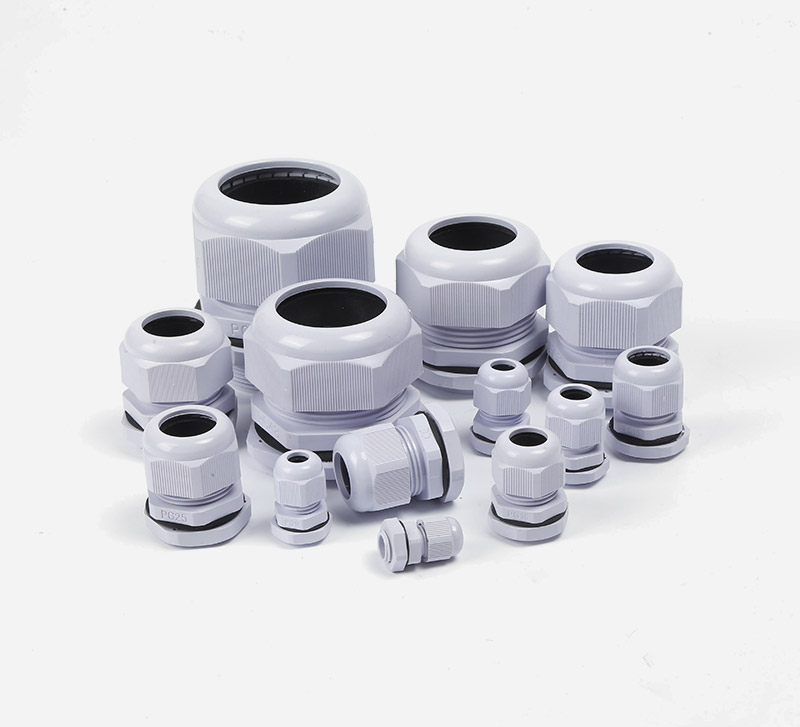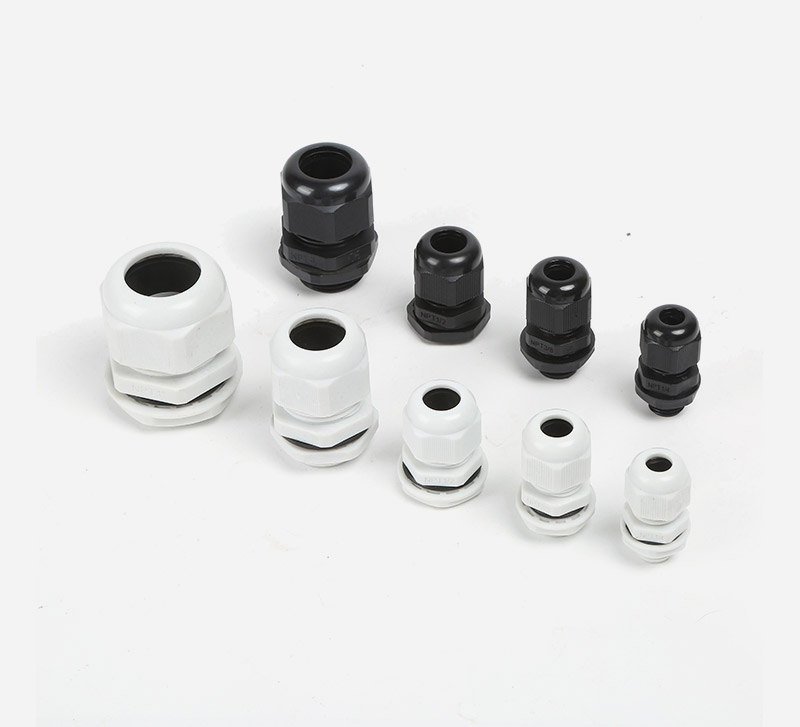What is the difference between PVC and nylon glands?
When running cables or wires through an enclosure, panel, or wall, a cable gland is an essential component. It serves a critical role: it secures the cable, provides strain relief, and seals the entry point against dust, moisture, and other environmental contaminants. Among the most common materials for cable glands are PVC and Nylon. While they might look similar at a glance, understanding their differences is key to selecting the right one for your application, ensuring safety, durability, and performance.
This article will break down the differences between PVC and nylon glands in a simple, structured way.
1. Material Composition and Basic Properties
PVC Glands: Made from Polyvinyl Chloride, a common type of plastic. PVC is known for being cost-effective and offers good general-purpose protection. It is inherently flexible but can become brittle over time, especially when exposed to certain environmental conditions.
Nylon Glands: Made from Nylon, specifically Nylon 6 or Nylon 66, which is a class of engineering plastics. **Nylon cable glands** are renowned for their superior mechanical strength, toughness, and resistance to a wider range of chemicals compared to PVC.
2. Key Differences at a Glance
Here is a direct comparison of their most important characteristics:
| Feature | PVC Glands | Nylon Glands |
|---|---|---|
| Durability | Good for basic use | Excellent, very tough |
| Heat Resistance | Lower (-5°C to 60°C) | Higher (-40°C to 100°C+) |
| Chemical Resistance | Resists acids, alcohols | Superior resistance to oils, fuels |
| UV / Weathering | Can degrade in sunlight | Excellent for outdoor use |
| Cost | Lower cost | Moderately priced |
3. When to Choose Which?
Choose PVC Glands for:
- Indoor, light-duty use: For example, in domestic wiring, data cabinets, or internal control panels where there is no exposure to harsh chemicals, extreme temperatures, or physical abuse.
- Cost-sensitive projects: Where the application is benign and the primary requirement is basic sealing and cable holding.
- Non-critical applications: Where failure of the gland would not lead to significant downtime or safety hazards.
Choose Nylon Glands for:
- Industrial environments: Manufacturing floors, chemical plants, and wastewater treatment facilities where exposure to oils, chemicals, and physical impact is likely.
- Outdoor applications: Any installation exposed to sun, rain, and wide temperature fluctuations. The UV stability of nylon glands is a key advantage here.
- Demanding conditions: Applications involving high vibration (e.g., on machinery), potential for cable pull-out, or extreme temperatures.
- Safety-critical systems: In applications where a gland failure could lead to equipment damage, fire risk, or process shutdown, the robustness of nylon cable glands makes them the reliable choice.
Conclusion: A Matter of Application
In summary, the choice between PVC and nylon glands boils down to the specific demands of your application.
Think of PVC as a reliable economy car—it's perfect for getting you around town on smooth roads. It does the job well for basic needs.
On the other hand, nylon glands are like a rugged 4x4 truck —built to handle tough terrain, harsh weather, and heavy loads without breaking a sweat.
For most industrial, commercial, and outdoor uses, the superior mechanical properties, temperature range, and chemical resistance of nylon cable glands make them the recommended and often mandatory choice. While the initial investment is slightly higher, their durability and reliability provide greater value and peace of mind in the long run.







